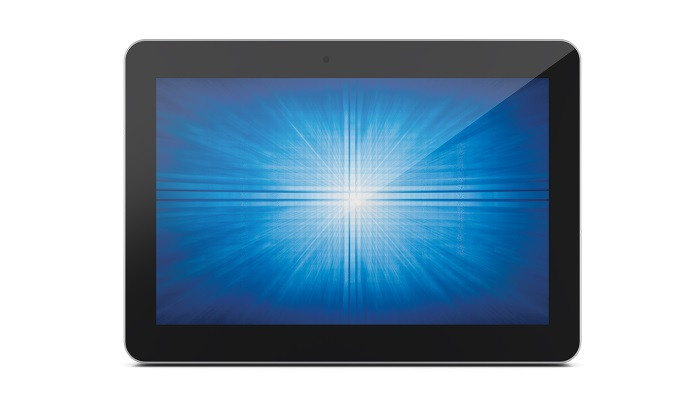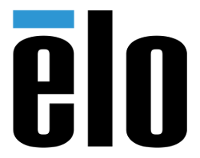



















£807.34*
- Resolution 1920 x 1080 Full HD
- Max. Brightness 300 cd/m²
- Panel type IPS
- Contrast Ratio 700 :1


Product information
I-Series 2.0 for Android™
The I-Series 2.0 for Android is one of the most versatile product lines on the market. All models are available in the colours white and black, allowing them to blend in perfectly with their surroundings. Thanks to the numerous mounting options, the I-Series offers the flexibility and robustness required to withstand constant interaction in public spaces. This makes this AiO solution particularly suitable for use in stationary retail, at the point of sale, in self-service, in wayfinding systems, in companies and in the catering industry.The I-Series 2.0 for Android combines maximum reliability for commercial applications with the powerful Snapdragon™ processor from Qualcomm® and Android. The I-Series delivers twice the performance of its predecessor. In addition, the compact, responsive all-in-one (AiO) computers feature integrated 10-touch displays with TouchPro® PCAP technology, Android 7.1 (Nougat) and optional Power over Ethernet (PoE).EloView, the device management and content delivery platform, makes deployment and management of the I-Series simple and convenient. As the hardware and software are developed and tested by the same manufacturer, all functions are optimised for each other and the devices are set up automatically when they are connected. Whether you want to transfer new content to a device or change the screen brightness, EloView is ready.
One series for everything - the new I-Series
The I-Series 2.0 from Elo offers versatility in different environments. No matter where it is used - in retail, entertainment, corporate offices or as a digital signage system: the I-Series not only impresses with its elegant, modern appearance, but also meets the requirements for long-term use in public spaces.
Processor
Thanks to the super-fast Snapdragon octa-core processor from Qualcomm, the I-Series2.0 for Android offers twice the performance of its predecessor.
Random access memory (RAM)/storage capacity
The I-Series 2.0 for Android is available as a standard model with 3 GB RAM and 32 GB memory, while a further, value model offers 2 GB RAM and 16 GB memory.
Operating system
The I-Series 2.0 for Android works with Android 7.1 (Nougat) and allows you to utilise the latest features of the Android operating system.
Display
Three different sizes are available: 10 inch, 15 inch and 22 inch. All models feature TouchPro® touchscreen technology, which delivers fast response times and multi-touch with up to ten simultaneous touch points.
Features - customised to you
Which colour is better? Black or white? The choice is yours. All models are available in two colours: black and white, so you get a solution tailored to your needs (standard colour is black, white is available to order). Do you need to connect peripherals to your device? How much memory and storage capacity do you need? All Standard and Value models are offered in 10" and 15" formats; both deliver the same performance and are equipped with the same processor.which model is right for you? The standard model offers more memory and storage space, connections for peripheral mounting on the device and a webcam.
Power over Ethernet (PoE)Now you no longer need to connect a mains adapter.
The new Power over Ethernet (PoE) module is an optional accessory that you can pair with all I-Series 2.0 models. All you need is a PoE-capable network to connect the PoE module to the I-Series.
In retail environments, where power outages can be expensive, the use of low-voltage network cables provides a more cost-effective solution. ForAV applications (e.g. meeting rooms), PoE is also an easy-to-implement solution for conference room scheduler displays orAV control applications.
EloView®
An evolutionary platform that combines hardware and software - user-friendly, quick to implement and cost-effective. EloView is a secure management platform for reliable content delivery and convenient remote device management. Whether you want to transfer new content to a device or simply need to change the brightness of the screen: It's child's play with EloView.
The EloView Software-as-a-Service (SaaS) platform is designed to simplify and automate the configuration and deployment of your Elo interactive displays across multiple locations. By optimising operations, you can transform your existing marketing content into public, interactive experiences in no time. It's proven that more in-store sales are made when you offer your shopper an immersive brand experience at the moment of purchase.
Virtual GPS via EloView
Applications often depend on the GPS location of individual devices to recognise what content should be displayed. The problem is that a GPS chip does not work indoors and can be expensive when added to a device that is in a fixed location for most of its life.
EloView allows you to remotely set the position (latitude/longitude) of the fixed device so that the application can be synchronised with the GPS coordinates. Now the application can run localised content because it recognises where the unit is.
Long service life
I-SeriesAiO touchscreens for digital signage applications deliver proven Elo quality and reliability, backed by our two-year standard warranty with an optional five-year extension. A reliable complete solution from a single source: we design and build systems that prioritise touch functionality and the touch experience from the outset.
Technical data
| Name | ELO Touch E611296 - I-Series 2.0 STANDARD 15.6" Display |
|---|---|
| Article number | 1000012825 |
| GTIN/EAN | 0815335028168 |
| Manufacturer SKU | E611296 |
| Model name | E611296 - I-Series 2.0 STANDARD |
| Brand | ELO Touch |
| Product Type | Touch display |
| Technology | LCD |
| Panel type | IPS |
| Resolution | 1920 x 1080 Full HD |
| Diagonal | 15.6" |
| Aspect Ratio | 16:9 |
| Contrast Ratio | 700 :1 |
| Max. Brightness | 300 cd/m² |
| Response time | 25ms |
| Support - VESA | 75 x 75 |
| Product width | 38.67 cm |
| Product height | 2.83 cm |
| Product depth | 15.23 cm |
| Weight | 1.59 kg |
| Colour | Black |
| EEK Spectrum | A to G |
| Condition | New |
| Warranty type | Bringin service Service and support information |
Product safety
| Person responsible for the EU |
|---|
| Elo Touch Solutions, Inc. |
| Keizerstraat 7 |
| 4811 HL Breda |
| Netherlands |
| EMEA.Sales@EloTouch.com |



